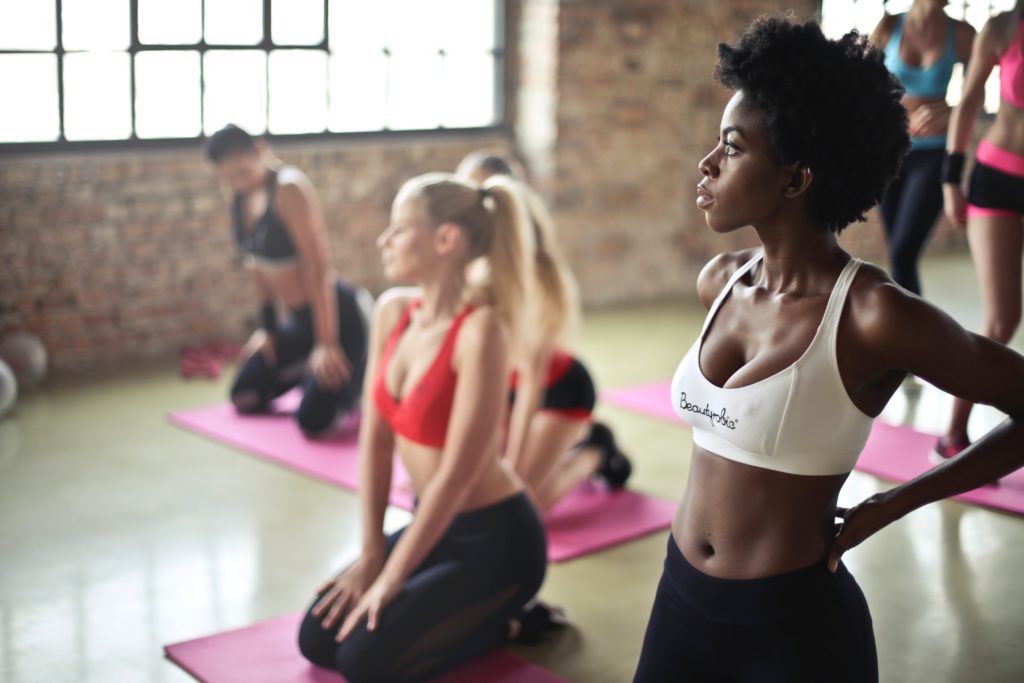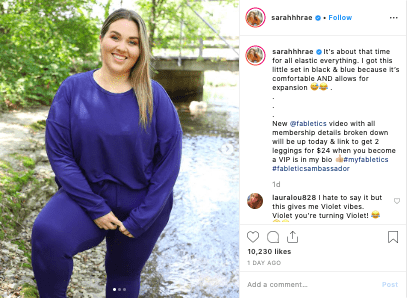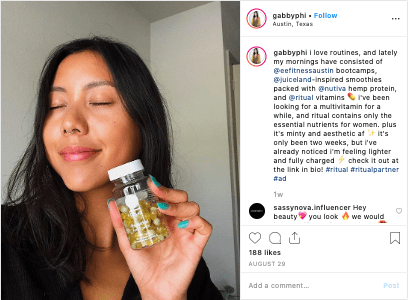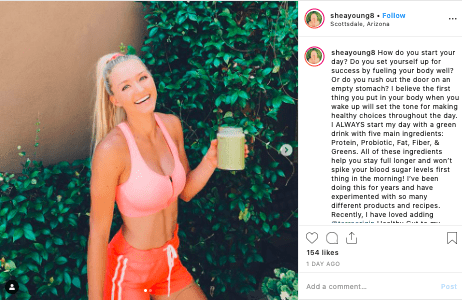In 2019, as the Health and Wellness market surged, brands like Fabletics, Ritual, and Terra Origin effectively utilized Influencer Marketing to connect with diverse audiences and strengthen their market presence.

Published On: September 10, 2019
In 2019, Health and Wellness have been at the forefront of a lot of minds and arguably, social media has had a strong impact on this growth. A Healthline survey investigating the trends among Health and Wellness Influencers found that there are social media accounts providing advice and content on just about every health-related condition. Last year, at the Global Wellness Summit, Ophelia Yeung, a senior research fellow at the Global Wellness Institute stated that “wellness has become a dominant lifestyle value that is profoundly changing consumer behaviour and changing the markets.” People are spending more of their disposable income on their wellbeing rather than on traditional products like fashion with several studies showing that globally, we are all investing more in our health.
The USA is no exception to this shift, with statistics reporting that the Health and Wellness market is expected to reach a staggering $179 billion by 2020. With the market becoming increasingly competitive, many health and wellness brands are turning to Influencer Marketing to help them connect to their target audience and encourage them to include their products as part of their new healthy lifestyle.
In this post, we have highlighted 3 US brands that are winning with the help of Influencer Marketing.
Fabletics: Inclusive Influencers

Co-founded by award-winning actress, Kate Hudson, Fabletics is an online subscription retailer selling women’s athleisure. They have invested heavily in Influencer Marketing for several years, even calling for influencers to apply directly through their website. Fabletics claims to be an all-inclusive brand and this is reflected by the diversity of their #FableticsAmbassadors. Wearisma’s analysis reveals that inclusive Influencer selection practices are well received by audiences. For example, during August – September 2019 plus-size influencer Sarah Rae Vargas’ (@sarahhhrae) content for Fabletics achieved the 4th highest media value (~97K) for the athleisure brand.
Ritual: Micro-Influencers

Ritual offers a subscription service of vitamins made specifically for women. The design of the vitamins is particularly insta-worthy, feeding into their catchphrase “good looking science”. The global dietary supplements market size is projected to reach $195 billion by 2025 with North America emerging as the largest market for dietary supplements in 2018. Ritual is using Micro-Influencers to maintain its growth within this competitive market. When looking at #RitualPartner’s Wearisma’s analysis found that in the last month, Micro-Influencer gabby phi (@gabbyphi) achieved the highest engagement rate (5.5%).
Terra Origin: Mummy-Influencers

Terra Origin offers a range of protein powders and vitamins to suit a variety of needs from healthy digestion to healthy hair. Out of the three, they have one of smaller social media followings (5K Instagram followers as of September 2019). However, Terra Origin is aware of the value of Influencers, using them often most recently to promote their launch in department store Target. Terra Origin has seen success with Mummy-Influencers in particular. In the last month, the Influencer achieving the highest (13.2%) engagement rate is mother Shea Young (@sheayoung8). In our Mother’s Day blog this year, we highlighted the benefits of targeting mothers who are becoming increasingly active on social media.
It is going to get increasingly difficult to optimise your brand without the implementation of an intelligent Influencer Marketing strategy. As highlighted by these three brands, Wearisma’s analysis suggests that working with ‘inclusive Influencers’, ‘Micro-Influencers’ and ‘Mummy-Influencers’ will help Health and Wellness brands defend their position within this growing industry.
Keep informed with the latest trends, reports, and case studies from the world of influencer marketing.
Ever wondered how top influencers turn their social media presence into a thriving business? The secret lies in something that might surprise you: data. Behind the perfectly curated posts and engaging stories, successful influencers are quietly mastering the art of campaign tracking – the very thing that separates casual content creators from professional digital marketers.
Inside, we’ll explore how leading influencers use performance metrics to secure bigger brand deals and prove their value through strategic campaign tracking. Whether you’re a content creator or brand, these insights reveal the true drivers behind today’s most successful influencer partnerships.

WeArisma’s Luxury 2025 State of Influence Interactive Report – Your Essential Guide to Luxury Brand Success in the Digital Age.
Times have changed, and so have consumer preferences, leading to a departure from what good looks like. To evaluate earned media partnership efficacy this new era requires a new way of thinking about success.
Influential voices have delivered outstanding Ripple Impact for the world’s top-performing luxury brands, collectively reaching and engaging far more consumers than brand owned social media channels. They:
Reached 5X more consumers, generated 4X higher EMV, produced 33X more content, and drove 4.5X greater Engagement
This interactive report lets you explore key performance metrics, compare data across countries, and discover which luxury brands lead the rankings.
Stay up to date with the latest industry trends and topics
Discover how WeArisma can help you harness the power in influence, grow your brand’s presence, and achieve measurable success.
WeArisma combines the power of AI, influencer marketing and social listening to deliver smarter, scalable strategies with real impact.